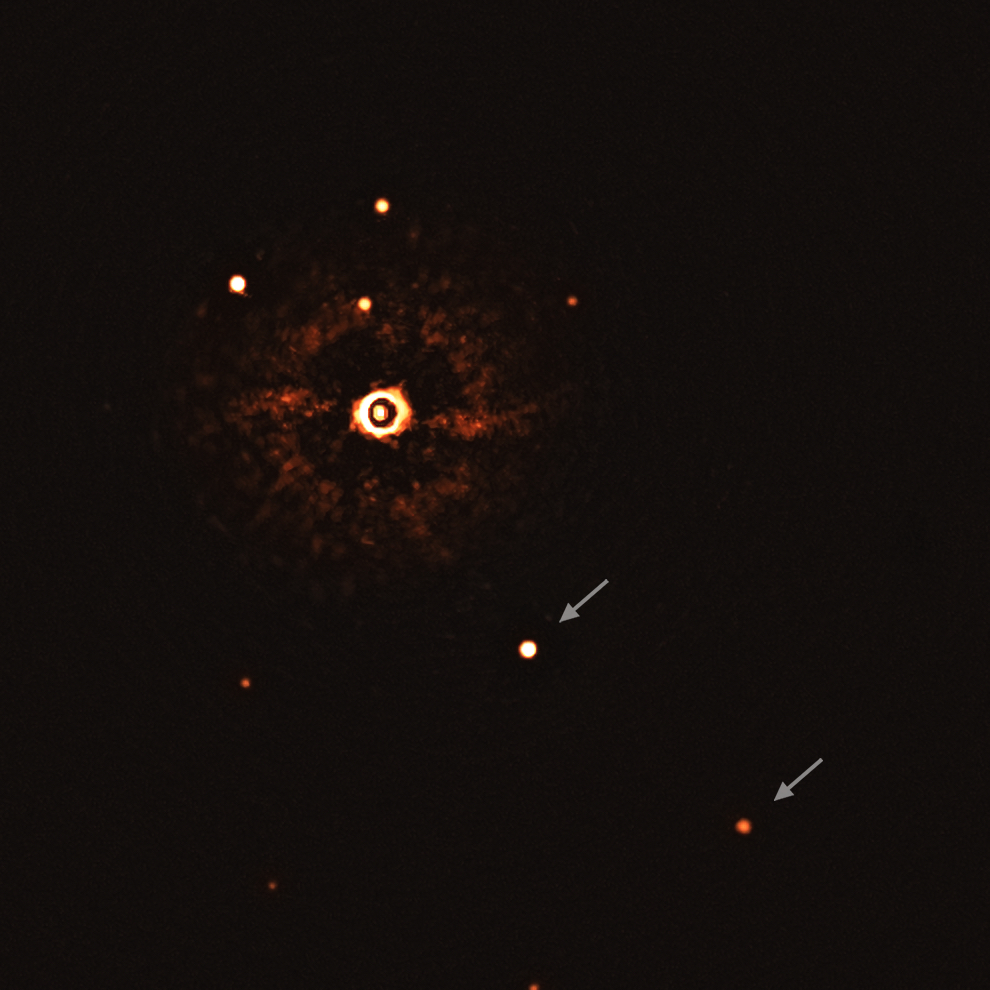Using the SPHERE coronagraph on the Very Large Telescope in Chile astronomers from Leiden University have for the first time directly imaged two giant planets around a star that is similar to our own Sun. Only a handful of planetary systems with more than one planet have been photographed so far.
The researchers including PhD candidate Alexander Bohn and associate professor Matthew Kenworthy say the image is a snapshot of an environment that is similar to that of our own Solar System, but in a much earlier stage. These kind of observations are important for the search for environments that can support life.
The planets orbit their host star (TYC 8998-760-1) at a distance of about 160 and 320 times the distance between the Earth and the Sun. The planets were discovered by taking multiple photos of the planetary system that showed the motion of the planets.
The SPHERE coronagraph that was developed at the LEOPARD group was essential for capturing the light of the planets. It was used to block the light from the much brighter nearby star. Read more about coronagraphy and other techniques developed at LEOPARD.

Read more about the discovery on the ESO website. The research was published in The Astrophysical Journal Letters.

